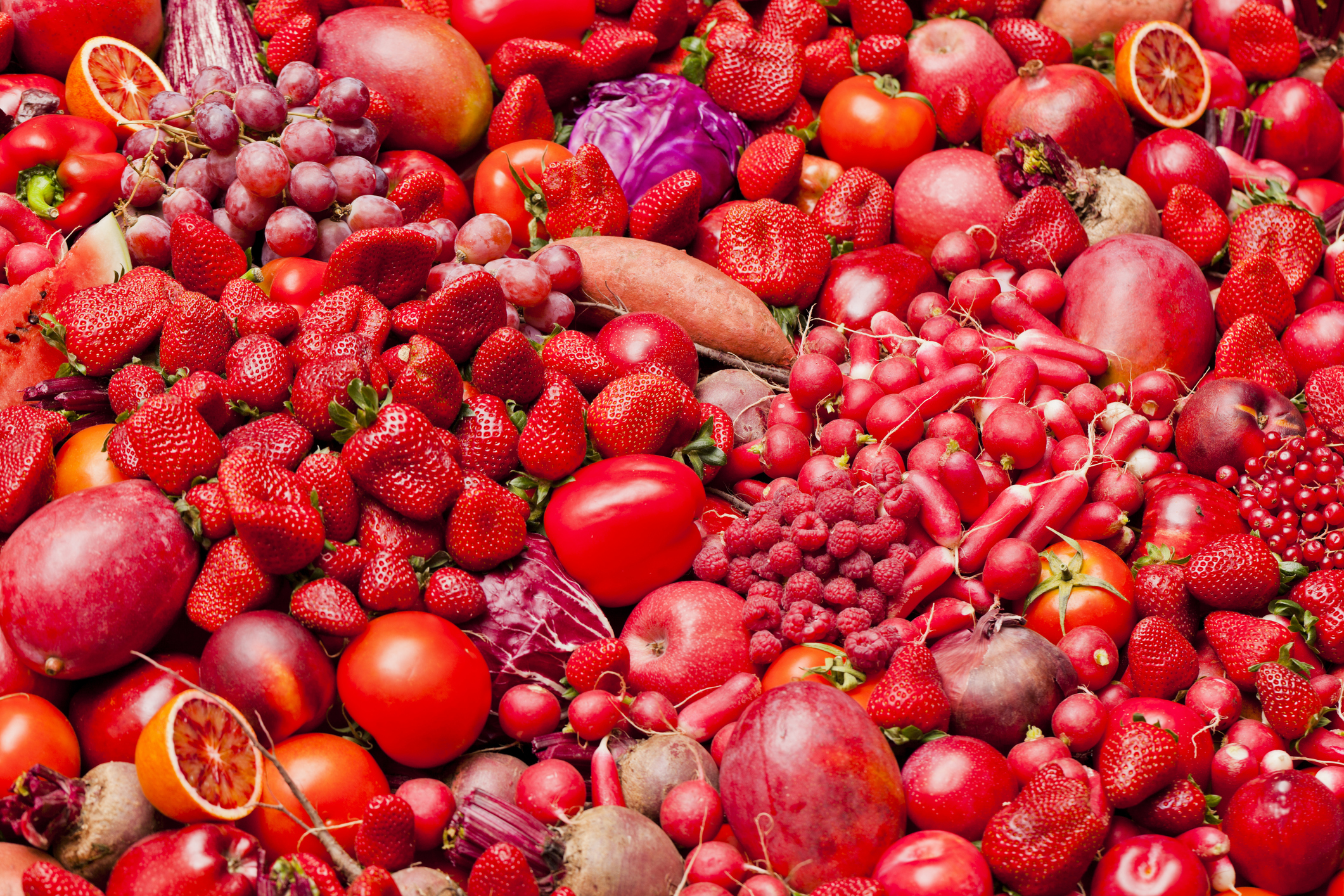Optimum Wellness Presented by King Soopers
Dr. James Rouse-Author
Wouldn’t it be fun if we ate by color group rather than by season? Or what if we designated every day of the week to a different color group, we would truly be eating a rainbow. The bountiful beauty found in fresh fruits and vegetables isn’t just random. Those colors and pigments that make carrots orange, strawberries red, and broccoli green are actually super-charged antioxidants, vitamins, minerals and other nutrients. Here are some fun facts about your favorite reds:
Red Apples – Red apples are red because of their anthocyanin (antioxidants) content. You don’t want to peel your apples before you eat them because much of the nutrition is packed in the skin! Other standout nutrients (and fabulous Scrabble words) include flavonols (like quercetin), catechins, fiber, and vitamin C. All of this goodness contributes to the many health benefits of eating apples, which include: cardiovascular benefits, blood sugar regulation, Alzheimer’s prevention, anti-cancer and anti-asthma benefits.
Beets – Beets contain powerful phytonutrients called betalains. Betanin pigments in beets have anti-inflammatory and antitumor actions. Beets have awesome detoxification properties and are best eaten lightly cooked to preserve the most nutrition.
Tomatoes – Lycopene is one of the most known antioxidants that not only give tomatoes their red color, but their reputation as a superfood. Lycopene is important for bone health and prostate health! Tomatoes contain a healthy dose of vitamin C and beta-carotene in addition to flavonols like quercetin and antioxidants lutein and zeaxanthin, which benefit the eyes. Tomatoes have been shown to have a positive effect on heart health and possible anticancer benefits..
Cherries – You may notice a certain trend among red foods and that is their anthocyanin content – cherries are no exception. Cherries are heart-healthy, anti-inflammatory, nutrient-rich little morsels that make summertime just a little more special. Cherries contain melatonin, which may help benefit sleep – especially the dried, tart cherries – those are a great pre-bedtime snack. The antioxidants in cherries have been shown to be anti-inflammatory, benefit memory, heart health, and protect against certain cancers.
Cranberries – Cranberries are probably most known for their effectiveness in helping to prevent urinary tract infections. This is mostly due to their proanthocyanin content, which also gives them their red color. Cranberries provide anti-inflammatory properties that support cardiovascular health, gut health, gum health, and healthy digestion. They provide a good source of manganese, vitamin C, and fiber.
Pomegranates – Though we don’t eat the skin of pomegranates, the edible seeds contain a bright red juice that is loaded with nutritional goodness. Antioxidants, vitamins A, C, E, and folic acid plus anticancer, anti-inflammatory, and antiviral properties give pomegranates a great reputation.
Red Raspberries – Raspberries are, as we all know, fragile little fruits. But did you also know that are totally loaded with not only anthocyanins, but contain an interesting compound, ketone, that may help increase metabolism. Another compound in raspberries, rheosmin, may actually help with blood sugar balance and fat metabolism. Vitamin C, manganese, fiber plus antioxidant and anticancer benefits put raspberries in the superfood category. And choose organic whenever possible, as the antioxidant levels have been shown to be higher in organic raspberries compared to conventional.
Strawberries – One of the best natural sources of vitamin C, strawberries are important to consume/purchase organic because the conventionally grown strawberries are among the worst offenders when it comes to pesticide residues. Strawberries are high in antioxidants and anti-inflammatory compounds that provide support for blood sugar regulation and cardiovascular benefits.
Watermelon – Like tomatoes, watermelons are a great source for the carotenoid, lycopene. Lycopene has been shown to have a protective effect on prostate health and bone health. The deep red flesh of the watermelon is where most of the polyphenol antioxidants are concentrated. The deeper the red the greater the antioxidant and anti-inflammatory nutrients are present. Watermelons contain vitamins C, B5, A, B6, and B1 plus copper, biotin, potassium, and magnesium. A great electrolyte replacer on a warm summer day.
Of course there are more reds to be enjoyed. Be creative. Try them all and think about what you’ll include on green (or purple) day!


